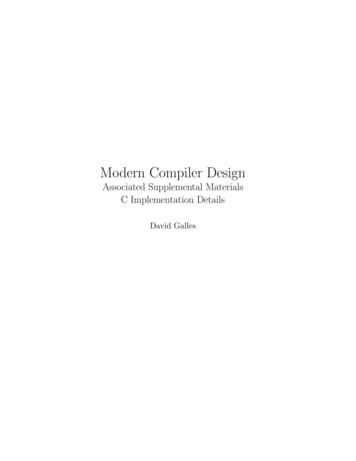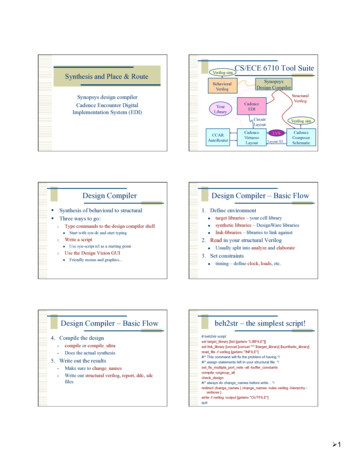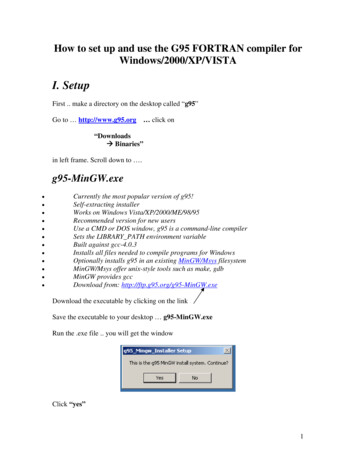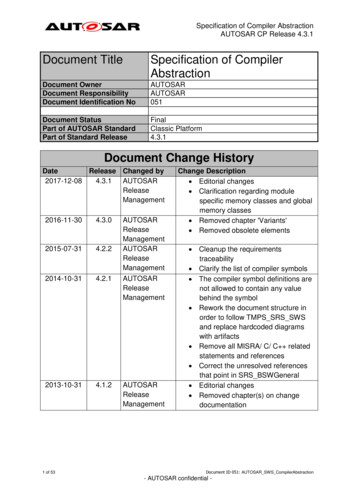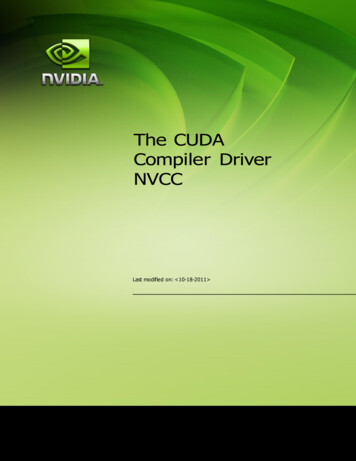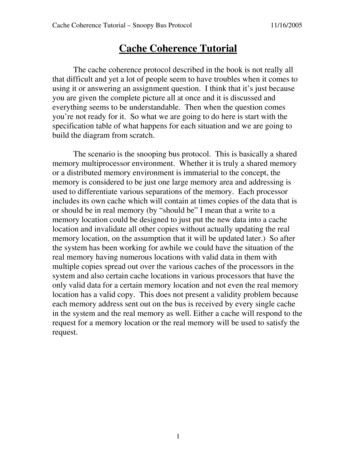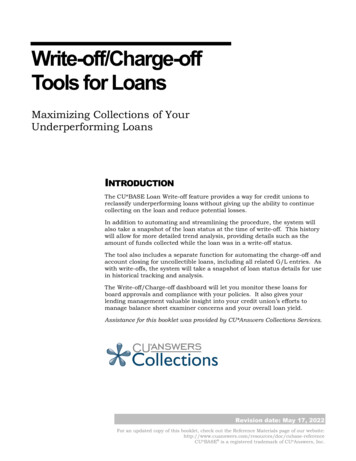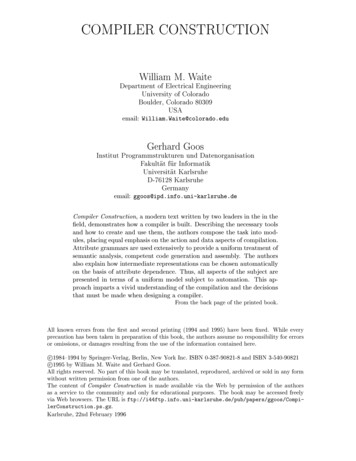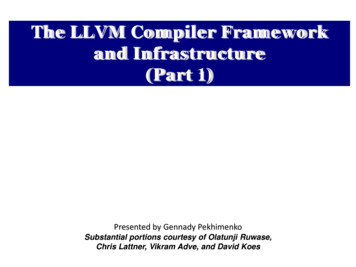
Transcription
Want to Write a Compiler?Pat MorinCOMP 3002
What is a Compiler? From Day 1:––––A compiler is a program that translatesfrom a source language Sinto a target language Twhile preserving semantics Often (but not always)– S is a programming language– T is a machine language2
Want to Write a Compiler? A compiler has 3 main parameter– Source language (S) What kind of input does the compiler take? C, C , Java, Python, .– Implementation language (I) What language is the compiler written in? C, Java, i386, x84 64– Target language (T) What is the compiler's target language i386, x86 64, PPC, MIPS, .sourcecode(in S)STIcompiledcode(in T)3
Source Language Issues Complexity– Is a completely handwritten compiler feasible? Stability– Is the language definition still changing? Novelty– Do there already exist compilers for this language? Complicated, or still-changing languagespromote the use of compiler generationtools4
Target Language Issues Novelty– Is this a new architecture?– Are there similar architectures/instruction sets? Available tools– Is there an assembler for this language?– Are there other compilers for this language?5
Performance criteria Speed– Does it have to be a fast compiler?– Does it have to be a small compiler?– Does it have to generate fast code? Portability– Should the compiler run on many differentarchitectures (rehostability)– Should the compiler generate code for manydifferent architectures (retargetability)6
Possible Workarounds Rewrite an existing front end– when the source is new– reuse back (code generation) end of the compiler Rewrite an existing back end– when the target architecture is new– retarget an existing compiler to a new architecture What happens when both the sourcelanguage and target language are new?– Write a compiler from scratch?– Do we have other options?7
Composing Compilers Compilers can be composed and used tocompile each other Example:– We have written a Java to JVM compiler in C and wewant to make it to run on two different platformsi386 and x86 64– both platforms have C compilersJavaJVMCCJavaJVMi386 i386i386JavaJVMCCJavaJVMx64 i386x648
ExamplePRM Assignment 3: Assignment 4:JVMJavaJVMJVM'JavaPRMJVM fib.prm PRMJVMJava JavaJVM JVMi386JVMJVM'Java Javaa.ja.jPRMJVMJVM'JVMJVM JVMa.j'i3869
Example Show how to– To take your PRM compiler and make it faster– To take your Jasmin optimizer and make it fasterPRMJVMJavaPRMPRM'JavaJavaJVMi38610
Bootstrapping by cross-compiling Sometimes the source and implementationlanguage are the same– E.g. A C compiler written in C In this case, cross compiling can be usefulC1CCx64C4 x64C5 x64CC3 x64 x642 i386 i386i38611
Bootstrapping Cont'd Bootstrapping by reduced functionality– Implement, in machine language, a simplifiedcompiler A subset of the target language No optimizations– Write a compiler for the full language in the reducedlanguageCC i386CC i386i386i386asm12
Bootstrapping for SelfImprovement If we are writing a good optimizing compilerwith I S then– We can compile the compiler with itself– We get a fast compiler gcc does this (several 6i386i38613
Summary When writing a compiler there are severaltechniques we can use to leverage existingtechnology––––Reusing front-ends or back endsCross-compilingStarting from reduced instruction setsSelf-compiling14
- E.g. A C compiler written in C In this case, cross compiling can be useful C C 1 x64 C i386 i386 C i386 3 x64 C C 4 x64 2 C x64 5 x64. 12 Bootstrapping Cont'd Bootstrapping by reduced functionality - Implement, in machine language, a simplified compiler A subset of the target language

